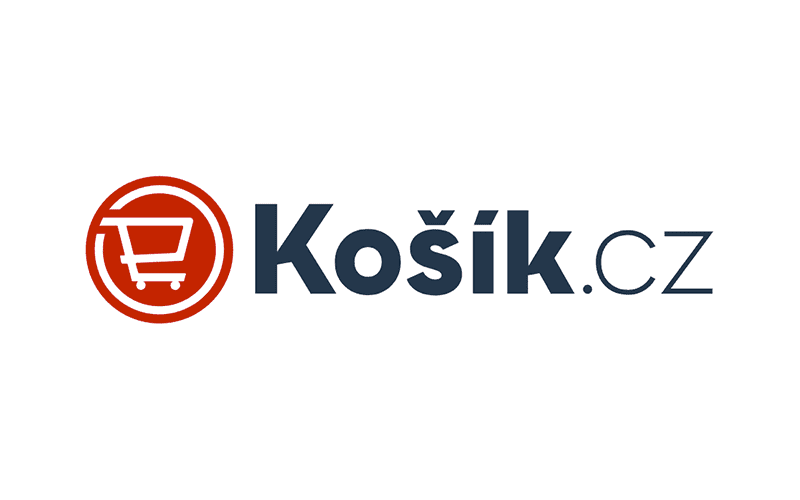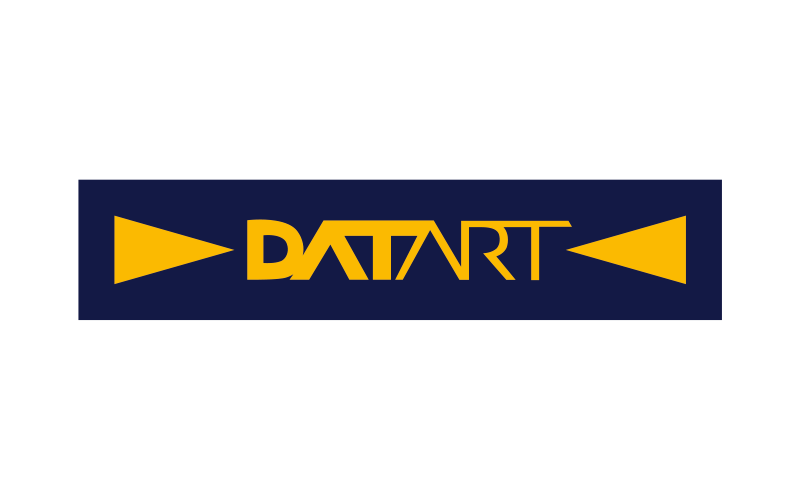Strategy and architecture
Define analytics strategy, audit your tech equipment, gather insights, optimize marketing and create roadmaps to deliver KPIs
Propel your data-driven success?
Tailored to your unique goals and needs, our meticulous measurement plan ensures relevant metrics and effectiveness. We define objectives, propose KPIs, and identify valuable segments for analysis.
With a robust digital analytics architecture, we optimize your digital marketing and product performance, driving impressive results and growth.
Why focus on
strategy and architecture
1
Strategy
is key
Align data strategies with business goals for a clear roadmap to success
2
Informed
decision-making
Improve your marketing tactics daily to deliver better ROI
3
Efficient data management
Streamline data collection, storage and analysis while saving time and money.
Key* Components of Digital Analytics Architecture
The digital analytics architecture comprises various components tailored to specific implementations. It involves data sources from websites, apps, social media, email, and ads.
Capturing user interactions occurs through tracking codes or tags. Stored in databases, data undergoes processing for analysis, generating insights through dashboards and reports. Informed decisions optimize content, customer targeting, and ad campaigns. Governance ensures compliance with data regulations like GDPR and HIPAA.
Solution
details & steps
A marketing and product analytics strategy encompasses the overall approach and methodology for leveraging data and analytics to drive marketing and product decision-making.
It involves the systematic collection, analysis, and interpretation of data related to marketing campaigns, customer behaviour, product performance, and market trends. The strategy aims to extract meaningful insights and actionable recommendations to optimize marketing efforts, enhance product offerings, and ultimately achieve business objectives.
Challenges
Data Accessibility and Quality:
A significant challenge in implementing a marketing and product analytics strategy is accessing the right data and ensuring its quality. Organizations may have data spread across multiple systems, making it difficult to consolidate and integrate. Additionally, data quality issues, such as incomplete or inaccurate data, can undermine the effectiveness of analytics efforts and lead to incorrect insights and decisions.Skill and Expertise Gap:
Leveraging analytics effectively requires skilled professionals with expertise in data analysis, statistical modeling, and data visualization. However, many organizations face a shortage of talent in these areas. Recruiting and retaining skilled analysts and data scientists can be challenging, and providing continuous training and upskilling opportunities for existing staff is essential to bridge the skill gap.Integration and Technical Complexity:
Marketing and product analytics often involve integrating data from various sources, such as CRM systems, web analytics platforms, social media platforms, and more. Ensuring seamless data integration and establishing a robust technical infrastructure to support analytics initiatives can be complex. Organizations may need to invest in appropriate tools, platforms, and IT infrastructure to enable efficient data collection, storage, and analysis.Privacy and Data Security:
The use of customer data for analytics raises privacy concerns and data security risks. Organizations must navigate compliance with data protection regulations, such as the General Data Protection Regulation (GDPR) or the California Consumer Privacy Act (CCPA). Ensuring proper data governance, implementing security measures, and obtaining appropriate consent for data usage are critical challenges in maintaining the privacy and security of customer data.
Benefits
Data-Driven Decision Making:
Marketing and product analytics provide valuable insights into customer preferences, behaviours, and needs. By analyzing customer data, organizations can segment their customer base, identify target audiences, and personalize marketing messages and product experiences. This leads to improved customer engagement, higher customer satisfaction, and increased customer loyalty.Enhanced Customer Insights:
Marketing and product analytics provide valuable insights into customer preferences, behaviours, and needs. By analyzing customer data, organizations can segment their customer base, identify target audiences, and personalize marketing messages and product experiences. This leads to improved customer engagement, higher customer satisfaction, and increased customer loyalty.Improved Marketing Effectiveness:
Analytics helps organizations measure and optimize the effectiveness of their marketing efforts. By tracking key metrics and performance indicators, organizations can identify which marketing channels, campaigns, and strategies yield the best results. This enables them to allocate resources more effectively, optimize marketing spend, and achieve a higher return on investment (ROI).Increased Product Innovation:
Leveraging product analytics allows organizations to gather insights into product performance, usage patterns, and customer feedback. This helps identify areas for product improvement, uncover new market opportunities, and prioritize product development efforts. By utilizing analytics to inform product innovation, organizations can develop products that better meet customer needs, differentiate themselves in the market, and drive business growth.In summary, a well-executed marketing and product analytics strategy empowers organizations to make data-driven decisions, optimize marketing efforts, enhance product offerings, and gain a competitive advantage in the market. By leveraging data and insights, organizations can drive growth, increase customer satisfaction, and achieve long-term success.
A MarTech and AdTech architecture audit is a comprehensive assessment of an organization's current data collection and advertising technology stack, with the goal of identifying areas for improvement and proposing strategies to leverage first-party data and achieve the best Return on Advertising Spend (RoAS).
The audit begins by evaluating the organization's existing MarTech and AdTech infrastructure. This includes reviewing the platforms, tools, and systems used for data collection, customer relationship management (CRM), marketing automation, analytics, and advertising. The data flow and integration between these components are examined to understand how customer data is captured, stored, and utilized throughout the marketing and advertising processes.
Challenges
Complex and Fragmented Ecosystem:
The MarTech and AdTech landscape is vast and constantly evolving. There are numerous tools, platforms, and technologies available, each serving a specific purpose. The challenge lies in managing and integrating these diverse systems into a cohesive architecture. The ecosystem often becomes complex and fragmented, with overlapping functionalities and limited interoperability. This complexity can hinder data flow, lead to inefficiencies, and make it difficult to extract meaningful insights.
Data Silos and Integration:
Data silos pose a significant challenge in the MarTech and AdTech architecture. Organizations may have different systems for customer relationship management (CRM), email marketing, social media management, content management, advertising platforms, and more. These systems often store data independently, resulting in data fragmentation and a lack of centralized visibility. Integrating these disparate data sources and breaking down silos is crucial for obtaining a holistic view of customers, campaigns, and performance.Privacy and Compliance:
With the increasing focus on data privacy and regulations such as GDPR and CCPA, ensuring compliance within the MarTech and AdTech architecture is a key challenge. Organizations need to handle customer data appropriately, implement consent management mechanisms, and ensure compliance with relevant regulations. Additionally, navigating privacy considerations while utilizing targeted advertising techniques and third-party data sources can be complex and requires careful adherence to privacy guidelines.Scalability and Agility:
As organizations grow and adapt to market demands, their MarTech and AdTech architectures must be scalable and agile. However, scaling the architecture to handle larger datasets, higher traffic volumes, and increased campaign complexity can be challenging. Organizations need to consider factors such as system performance, data storage, infrastructure scalability, and the ability to quickly integrate new tools or technologies. Balancing scalability with agility becomes crucial for staying competitive and responsive to changing business needs.
Benefits
Increased Efficiency and Effectiveness:
An architecture audit helps identify redundancies, inefficiencies, and gaps within the MarTech and AdTech systems. By streamlining the architecture and eliminating redundant tools or processes, organizations can increase operational efficiency. Optimizing data flow, integration, and automation can reduce manual effort, improve productivity, and enhance the overall effectiveness of marketing and advertising campaigns.Enhanced Data Insights and Decision-Making:
A well-audited MarTech and AdTech architecture enables better access to integrated and centralized data. By breaking down data silos and ensuring seamless data integration, organizations can gain a holistic view of their customers, campaigns, and performance metrics. This comprehensive data view facilitates more accurate analysis, deeper insights, and informed decision-making. With a solid architecture in place, organizations can leverage data-driven strategies to optimize marketing and advertising efforts.Improved Customer Experience:
A well-structured MarTech and AdTech architecture enables organizations to create personalized and relevant customer experiences. By integrating customer data from multiple sources and leveraging advanced segmentation and targeting capabilities, organizations can deliver highly personalized and timely messages to their customers. This leads to improved customer engagement, satisfaction, and loyalty, ultimately driving business growth.Scalability and Future-Readiness:
Conducting an architecture audit allows organizations to assess the scalability and future-readiness of their MarTech and AdTech systems. By identifying potential scalability challenges and gaps in infrastructure, organizations can plan for growth and adapt to evolving market needs. The audit helps evaluate the architecture's ability to handle larger datasets, increased traffic volumes, and emerging technologies. This ensures that the organization's marketing and advertising capabilities remain agile and responsive to future demands.
Capability Maturity Assessments & Roadmaps are comprehensive evaluations and strategic plans used to assess an organization's current capabilities across various functions and processes. The purpose is to identify strengths, weaknesses, and areas for improvement to enhance performance and drive growth.
The assessment process involves analyzing different aspects of an organization, such as leadership, strategy, operations, technology, talent, and organizational culture. This evaluation helps determine the maturity level of each capability area and provides insights into the organization's overall effectiveness and readiness for change.
Challenges
Data Availability and Quality:
One of the key challenges is the availability and quality of data needed to assess capabilities accurately. Organizations may struggle to gather relevant and reliable data across different functions and processes. Incomplete or inaccurate data can lead to biased assessments and inaccurate conclusions, hampering the effectiveness of the roadmap.
Organizational Resistance to Change:
Assessments often reveal areas that require improvement or changes in processes and practices. Resistance to change from employees and stakeholders can pose challenges in implementing the identified improvements. Overcoming resistance, fostering a culture of change, and ensuring stakeholder buy-in are critical for successful implementation of roadmap initiatives.Resource Constraints:
Implementing roadmap initiatives requires adequate resources in terms of finances, personnel, and time. Organizations may face challenges in allocating the necessary resources due to budget limitations, competing priorities, or lack of skilled personnel. Limited resources can impact the implementation timeline and the scope of improvement initiatives.Complexity and Interdependencies:
Organizations are complex systems with interconnected processes, functions, and capabilities. Assessing and improving capabilities in isolation without considering their interdependencies can lead to suboptimal outcomes. It is crucial to understand the interconnectedness of different capabilities and plan improvements accordingly to avoid unintended consequences.Measuring Progress and ROI:
Defining meaningful Key Performance Indicators (KPIs) to measure progress and evaluate the return on investment (ROI) of roadmap initiatives can be challenging. Choosing appropriate metrics and establishing baseline measurements can be complex, especially when multiple factors influence the outcomes. Aligning performance metrics with the overall business goals and effectively tracking progress is essential.
Alignment with Business Strategy:
The roadmap should align closely with the organization's business strategy and objectives. Ensuring that the identified capabilities and improvement initiatives directly support the strategic goals can be challenging. Lack of alignment may result in wasted resources, missed opportunities, and a roadmap that fails to deliver the desired outcomes.
Sustainability and Continuous Improvement:
Developing capabilities is an ongoing process, and sustaining the improvements achieved through the roadmap requires continuous monitoring, evaluation, and adjustment. Organizations need to foster a culture of continuous improvement and ensure that capability development becomes an integral part of their operations and strategic planning.
Benefits
Improved Performance:
Assessing capabilities helps identify areas of improvement, enabling organizations to enhance their performance. By understanding the maturity level of different capabilities, organizations can prioritize and implement targeted initiatives to bridge capability gaps, leading to increased efficiency, productivity, and quality.
Strategic Alignment:
Capability assessments and roadmaps help align organizational capabilities with business strategies and objectives. This ensures that improvement initiatives are directly linked to the overall goals of the organization, enabling better resource allocation and decision-making that supports long-term strategic success.
Enhanced Decision-Making:
By conducting capability assessments, organizations gain deeper insights into their strengths and weaknesses. This enables data-driven decision-making, as leaders can make informed choices based on a comprehensive understanding of their current capabilities and the roadmap for improvement.
Change Management:
Capability maturity assessments provide a structured framework for change management. They highlight areas where organizational change is necessary and enable organizations to proactively manage resistance to change. By engaging stakeholders and effectively communicating the rationale and benefits of capability improvement, organizations can facilitate a smoother transition and successful implementation of the roadmap.
Resource Optimization:
Capability maturity assessments help organizations optimize resource allocation. By identifying capability gaps and areas requiring improvement, organizations can allocate resources more effectively to focus on the most critical and impactful initiatives. This ensures that resources are utilized efficiently, minimizing wastage and maximizing return on investment.
Stakeholder Engagement:
The assessment and roadmap process involve engaging stakeholders at various levels of the organization. This promotes transparency, collaboration, and shared understanding, fostering a sense of ownership and commitment to capability improvement initiatives. Engaged stakeholders are more likely to actively contribute to the success of the roadmap, driving better outcomes.
A third-party data assessment can help businesses identify exactly what needs to be updated in order to properly manage risks and opportunities in a world without third-party identifiers. By providing clarity around the current state of the organization's data collection practices, the assessment can highlight areas that need improvement and identify potential risks and opportunities.
Challenges
The deprecation of third-party web cookies and mobile identifiers like IDFA by Google and Apple respectively, will undoubtedly create significant disruptions for businesses that rely heavily on these technologies for digital advertising and data tracking. However, there are also opportunities for brands that can adapt to these seismic shifts and embrace new approaches to data-driven marketing.
Third-party data can be a valuable resource for businesses looking to enhance their understanding of customers, target specific audiences, or improve their overall marketing strategies. However, it can also pose a significant risk to the privacy and security of customers and their personal information.
Benefits
The ability to plan how to maintain or increase the return on assets and total income of the enterprise by minimizing costs and focusing on their own data from primary sources.
By conducting an assessment, organizations can identify the types of third-party data they are currently using and determine whether it is necessary or redundant.
Your business can focus on collecting and analyzing your own first-party data, which can be more reliable, accurate, and cost-effective.
The ability to reduce their dependence on third-party data and improve the quality of their data-driven decisions, leading to better business outcomes and increased profitability.
The ability to lead a business with confidence through the transition from third-party cookies and IDFAs to a world without such identifiers.
Process
During the assessment, our consultants will use a variety of tools and techniques to diagnose the state of the organization's current data collection practices, including:
Data inventory and mapping: This involves identifying all the different data sources, including first-party, second-party, and third-party data, and mapping how data flows across different systems and platforms.
Tag management and analytics platform review: This involves evaluating the current tag management and analytics platforms used by the organization, assessing their effectiveness, and identifying any areas for improvement.
Advertising pixel review: This involves reviewing the organization's use of advertising pixels and assessing how they are used to collect and track user data.
Compliance review: This involves assessing the organization's compliance with relevant data privacy regulations, such as GDPR, and CCPA, and identifying any areas of non-compliance.
Based on the findings of the assessment, consultants will present a detailed and actionable plan for how the organization can manage its tag management and analytics platforms, alongside the advertising pixels, while maintaining data privacy compliance. This may involve implementing new tools or processes to improve data collection and processing, updating policies and procedures to ensure compliance with regulations, and establishing ongoing monitoring and reporting to ensure ongoing compliance.
First-Party Data Value Activation refers to the process of leveraging the insights and information gathered from your own website or app users to drive business growth and enhance marketing strategies. With Google Analytics 4, you can utilize the data collected directly from your audience to gain valuable insights, make data-driven decisions, and optimize your marketing efforts for better results. By activating the value of your first-party data through Google Analytics 4, you can uncover patterns, preferences, and behaviours of your audience, enabling you to create more personalized experiences, target specific segments effectively, and ultimately drive higher engagement, conversions, and ROI.
Challenges
Data Silos and Fragmentation:
One significant challenge is the presence of data silos and fragmentation within an organization. First-party data may be spread across different systems, departments, or platforms, making it challenging to have a unified and comprehensive view of the data. Siloed data can lead to missed opportunities for insights and hinder effective activation. Breaking down these data silos and integrating the data from various sources is essential to unlock the full value of first-party data.
Data Privacy and Compliance:
Another challenge is ensuring data privacy and compliance with regulations. As organizations collect and utilize first-party data, they must navigate the complexities of data privacy laws, such as GDPR and CCPA. Compliance with these regulations requires obtaining proper consent, ensuring data security, and providing transparent data handling practices. Balancing the use of data for personalization and targeting with customer privacy expectations and legal requirements is crucial for successful first-party data activation.
Data Quality and Accuracy:
Maintaining data quality and accuracy is a significant challenge when activating first-party data. Data collected directly from customers can suffer from issues such as missing fields, duplicates, outdated information, or errors. Poor data quality can lead to inaccurate insights, ineffective personalization, and flawed decision-making. Implementing data quality control measures, regular data cleansing, and validation processes are essential to enhance the reliability and usefulness of first-party data.
Benefits
Enhanced Personalization and Customer Experience:
First-party data provides valuable insights into customer behaviors, preferences, and interactions. By activating this data effectively, businesses can deliver highly personalized experiences to their customers. Personalization allows you to tailor marketing messages, product recommendations, and offers based on individual customer interests and needs. This level of customization improves customer engagement, satisfaction, and loyalty, leading to increased conversions and long-term customer relationships.Improved Targeting and Campaign Effectiveness:
Leveraging first-party data enables businesses to target their marketing efforts with precision. By understanding customer demographics, preferences, and purchase history, organizations can segment their audience and create targeted campaigns that resonate with specific customer segments. This approach improves the relevance and effectiveness of marketing messages, resulting in higher engagement rates, better conversion rates, and increased return on investment (ROI) for marketing initiatives.
Data-Driven Decision Making:
Activating first-party data provides businesses with a rich source of insights for data-driven decision making. By analyzing customer data, businesses can uncover patterns, trends, and correlations that inform strategic decisions. Data-driven decision making helps optimize marketing strategies, identify new business opportunities, and improve operational efficiencies. It enables organizations to make informed choices based on real customer data, reducing guesswork and increasing the likelihood of successful outcomes.
Enhanced Customer Retention and Loyalty:
By effectively activating first-party data, businesses can improve customer retention and foster loyalty. Understanding customer preferences, purchase history, and engagement patterns allows organizations to create personalized retention strategies. This may include targeted loyalty programs, personalized offers, or proactive customer support. By nurturing customer relationships through tailored experiences and ongoing engagement, businesses can strengthen customer loyalty and reduce customer churn.
Got a question or want to know more?
Join
50+ customers
Get in touch
Want to find out the real potential* of your data?
Drop your contact details and we will be with you shortly.
FAQs
Check out the most asked questions. If you have any other don’t hesitate to contact us.
Marketing & Product Analytics Strategy is a data-driven approach that involves gathering, analyzing, and interpreting data to make effective marketing and product decisions. It optimizes marketing efforts, enhances product offerings, and achieves business objectives.
A MarTech & AdTech Architecture Audit assesses an organization's data collection and advertising technology stack. It identifies areas for improvement to leverage first-party data, optimizing Return on Advertising Spend (RoAS).
Capability Maturity Assessments evaluate an organization's capabilities and performance across various functions. Roadmaps provide strategic plans for enhancing strengths, addressing weaknesses, and driving growth.
First-Party Data Value Activation involves leveraging insights from your website or app users to drive business growth. By utilizing data from Google Analytics 4, you can make data-driven decisions, create personalized experiences, and optimize marketing efforts for better results.















